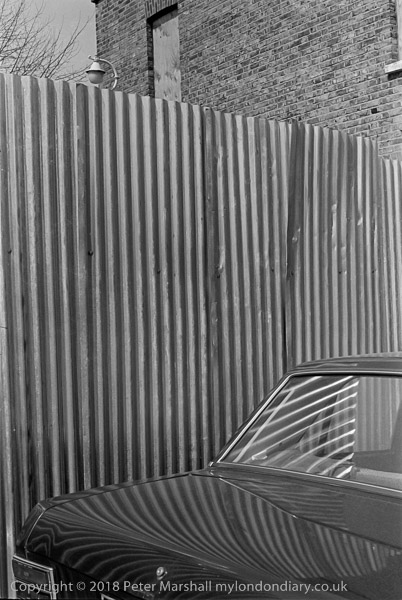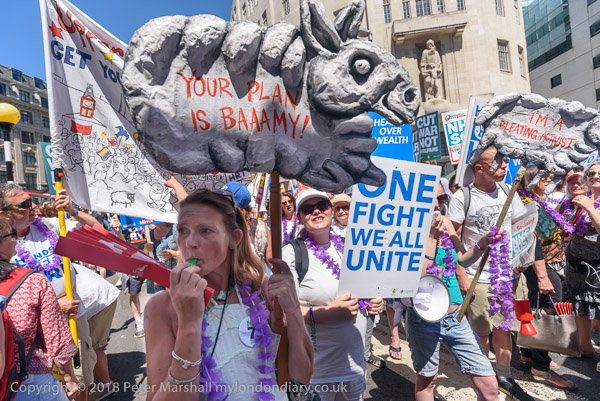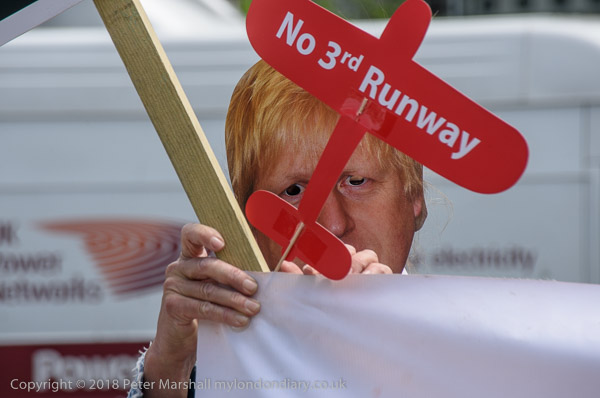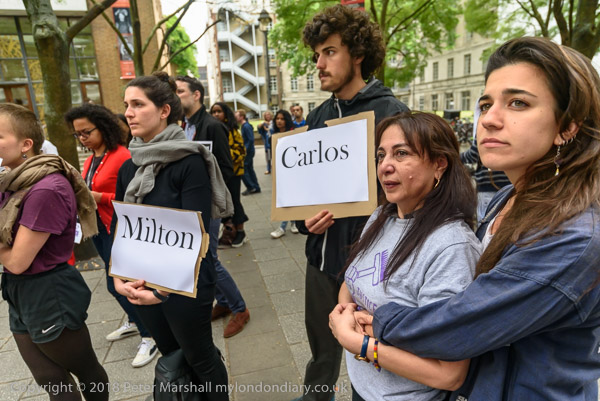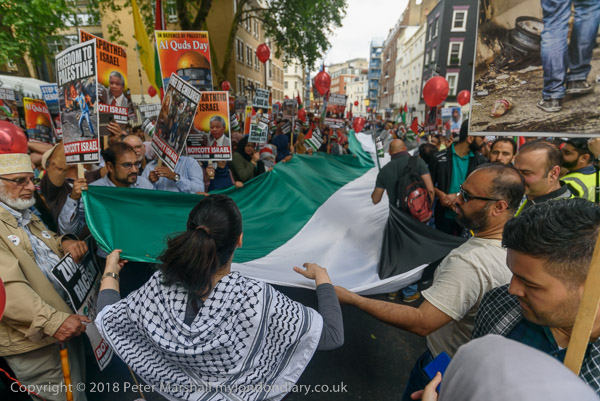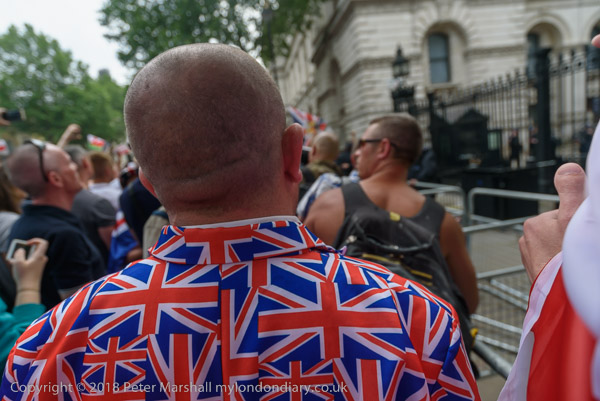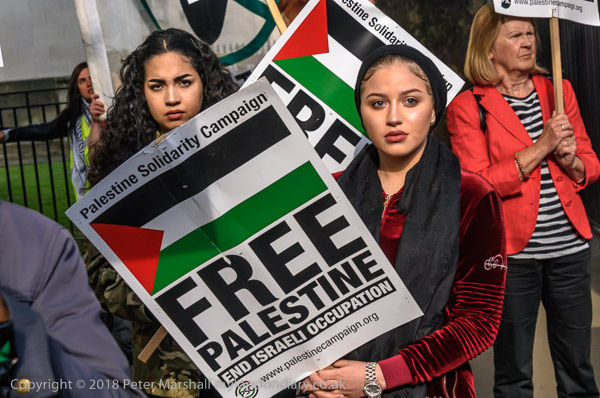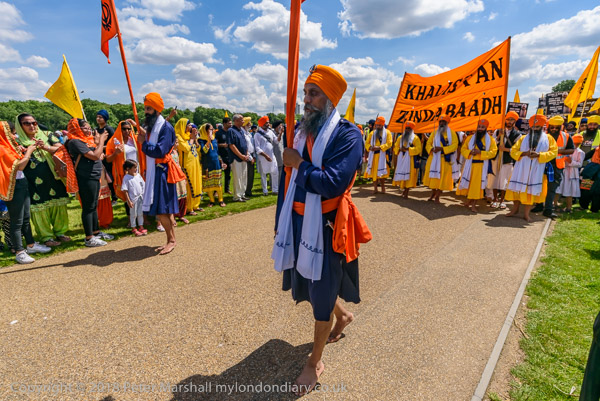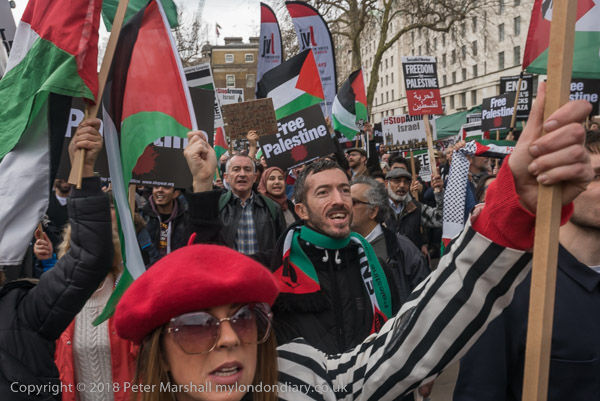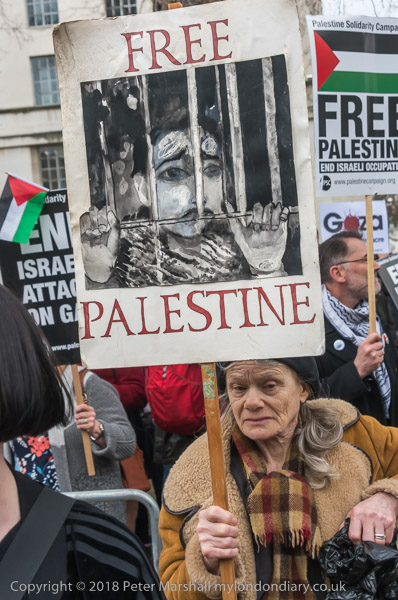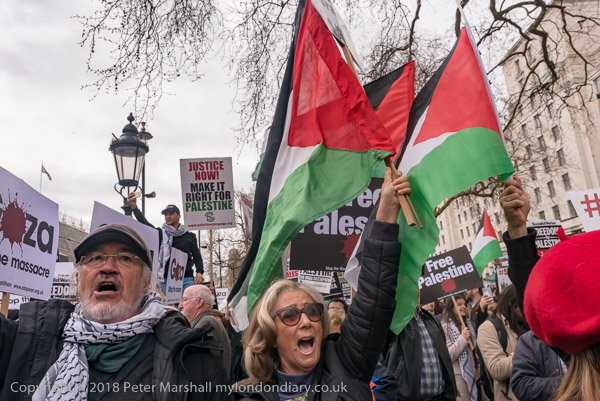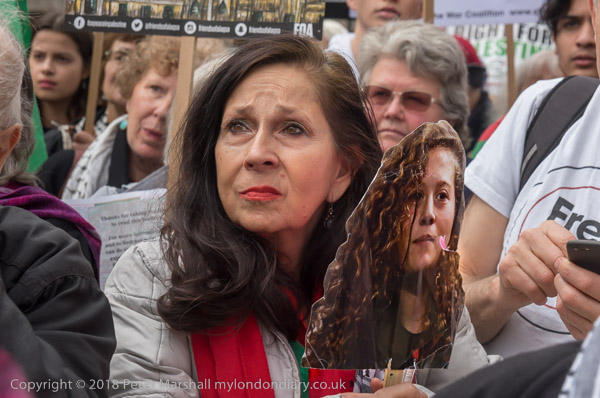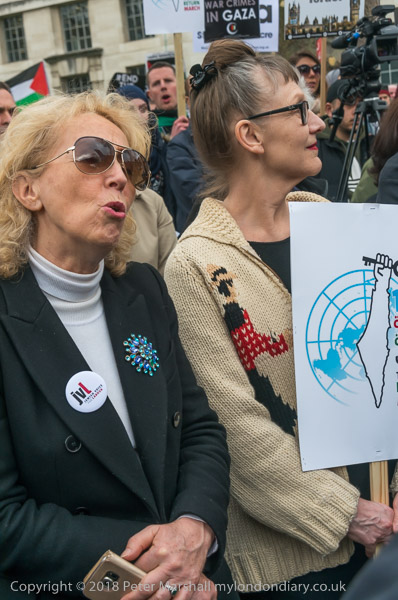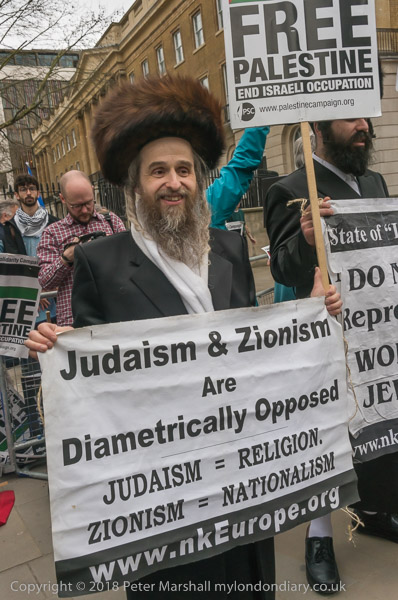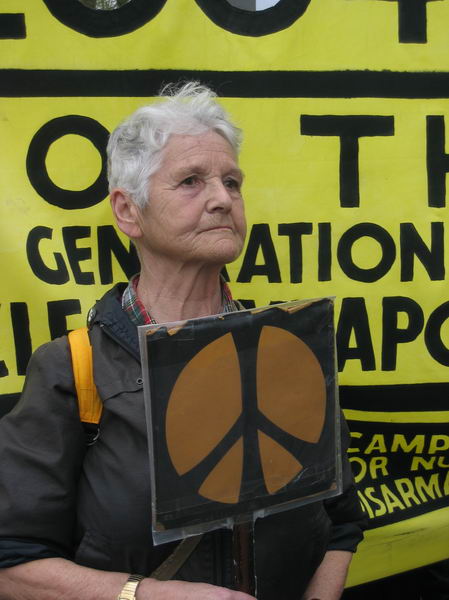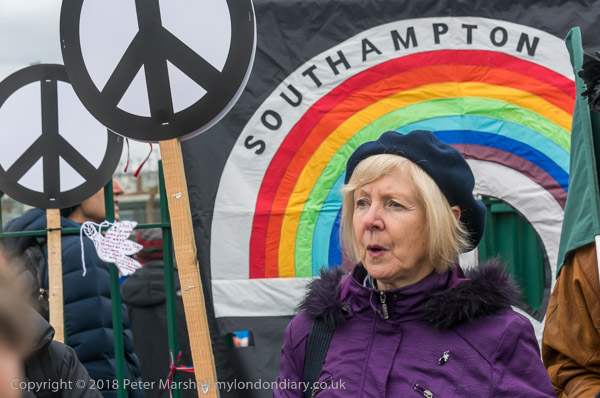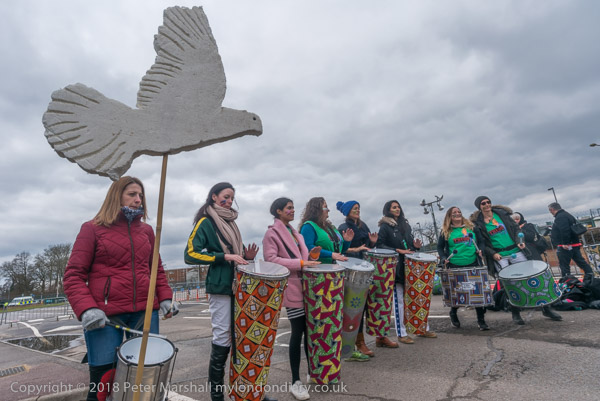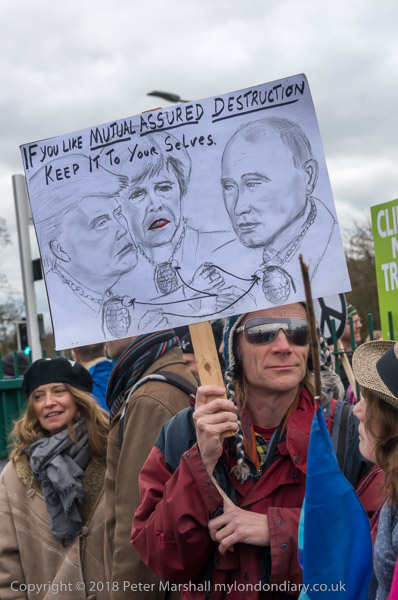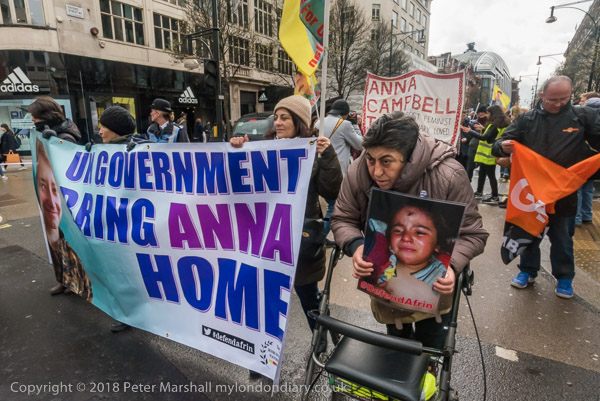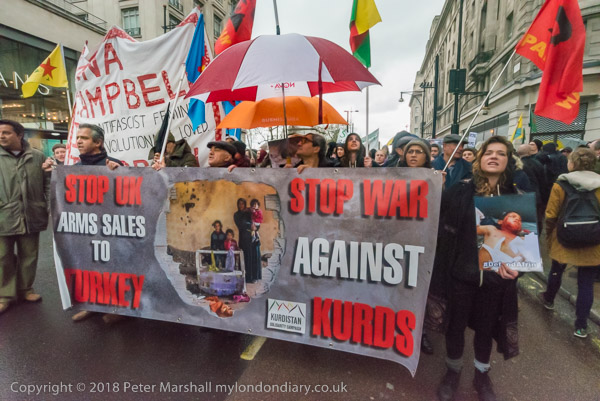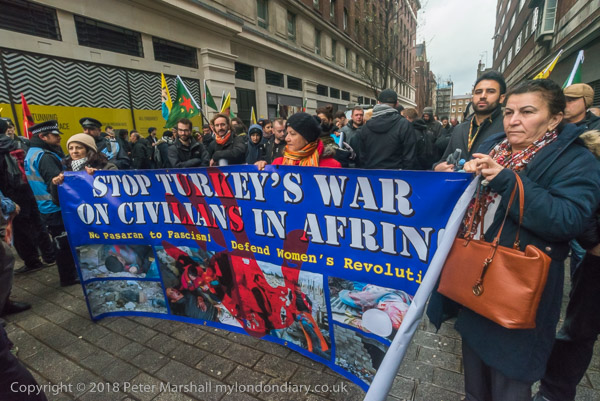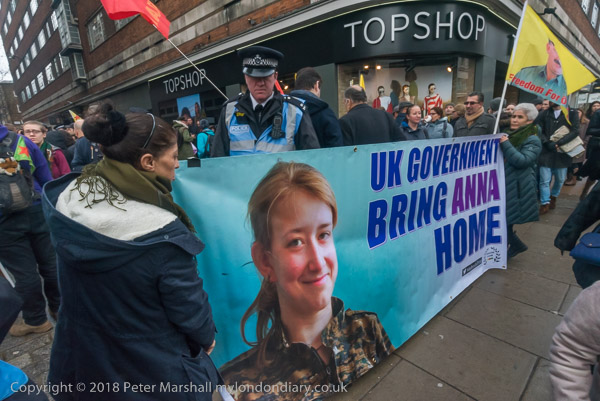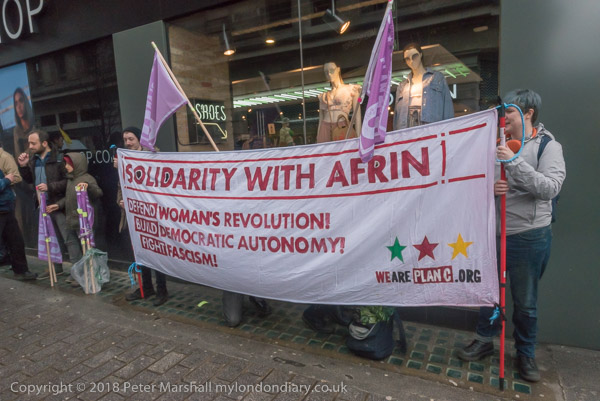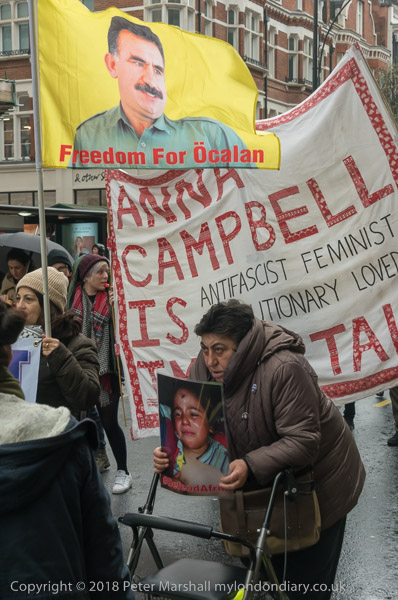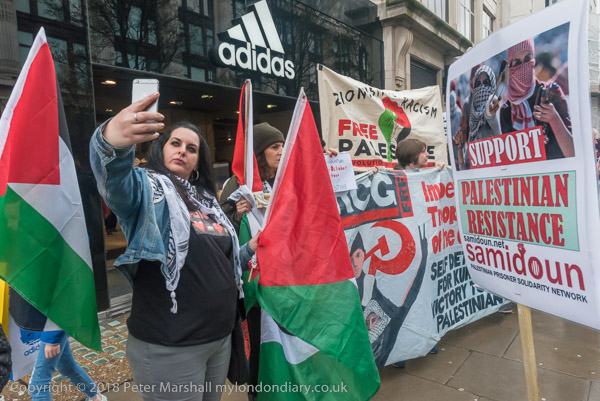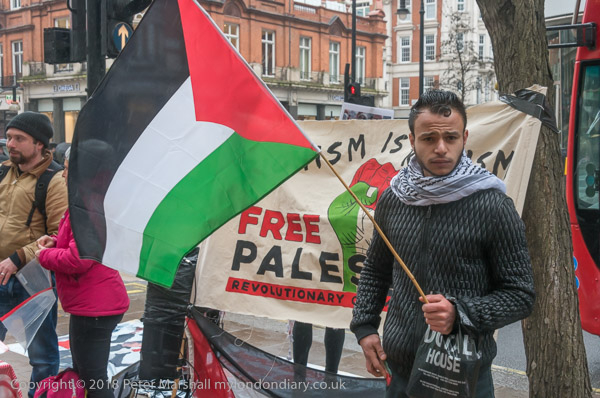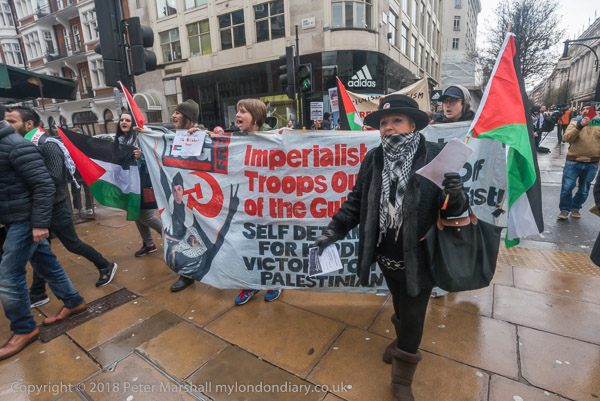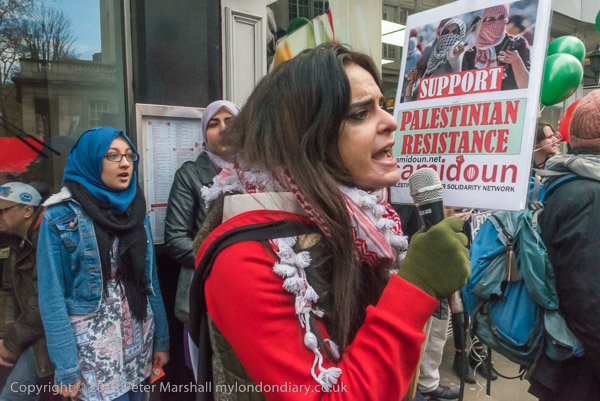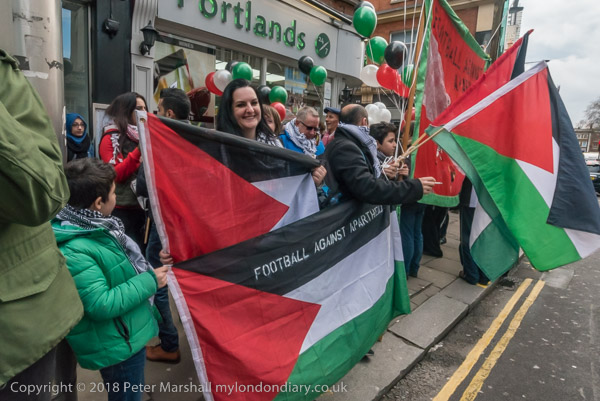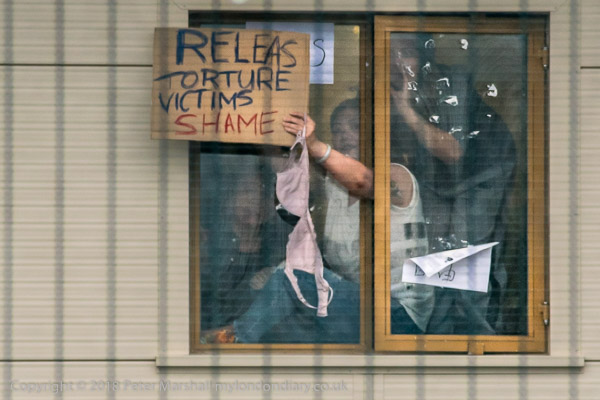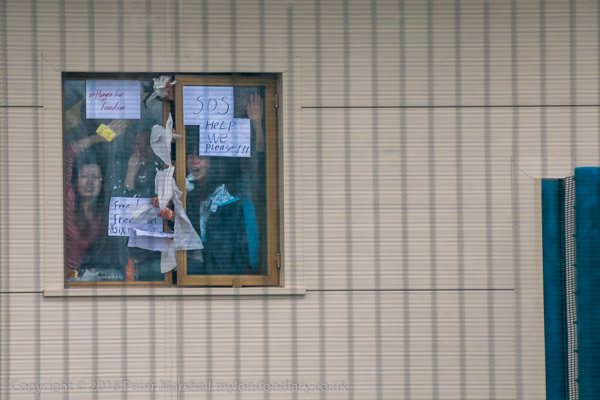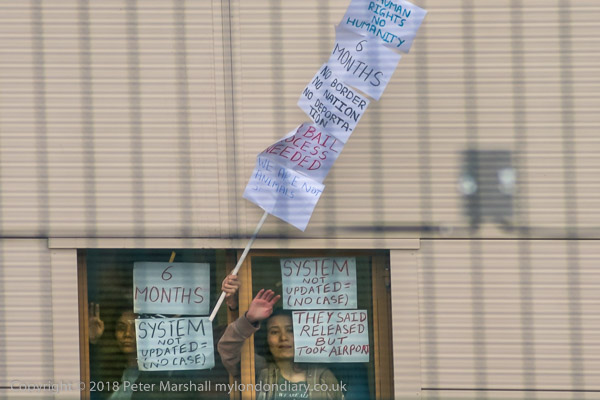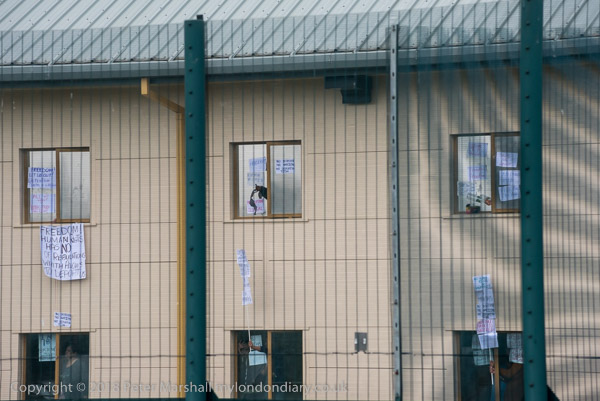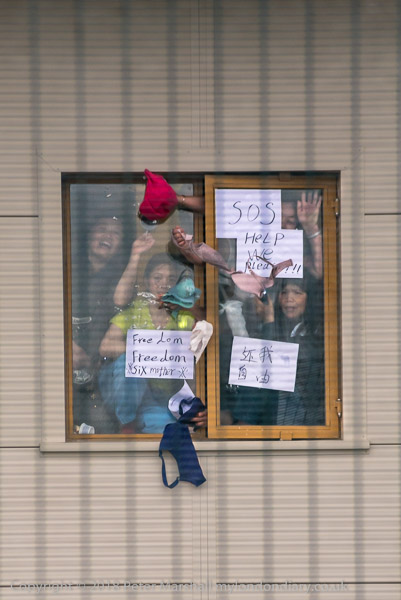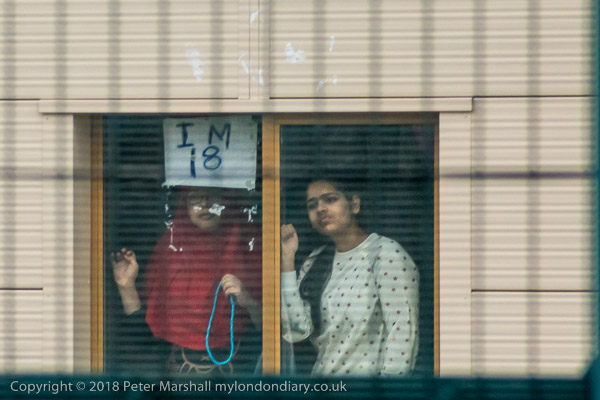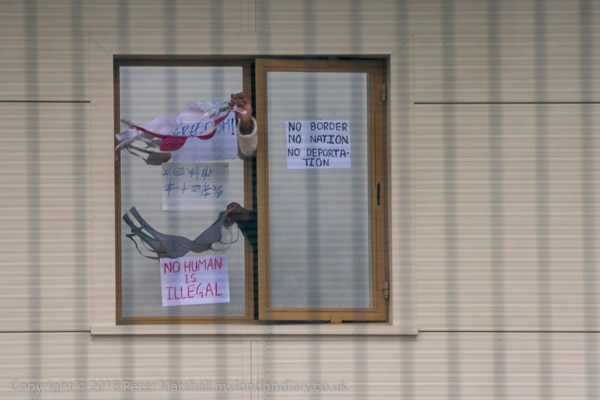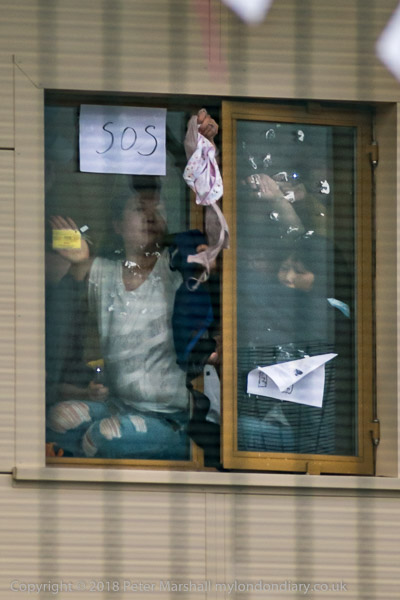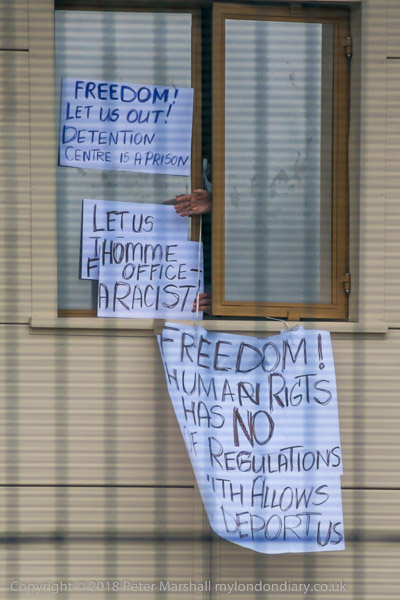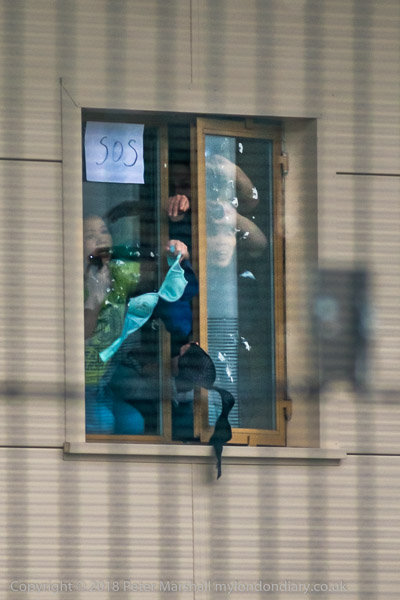I suppose on average the 13th of the month falls on a Friday once in seven months, and there is no real significance in this. This year, 2018, we had one in July (for Trump’s visit) but also there was one earlier in April, and slightly unusually for a Friday I photographed three events.
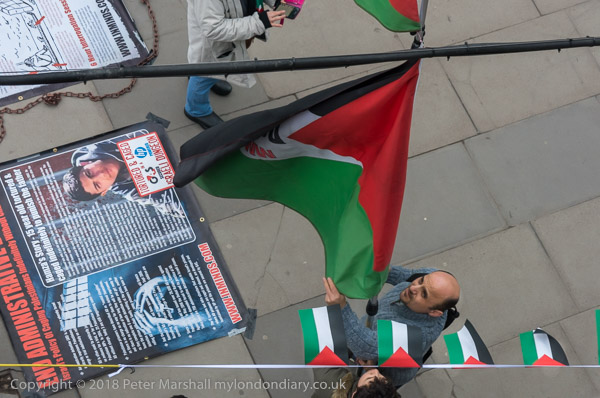
Inminds human rights group hold regular protests every couple of weeks, usually on a Friday against various aspects of the Israeli state’s treatment of Palestinians. They are at various locations, often outside companies who support the Israeli military or prison system in various ways, which provides some variety in the pictures on those occasions I go to photograph them. A constant feature is of course the Palestinian flag, rather a lot of them, including some on some very tall poles, which look good from a distance but are often difficult to photograph. Flags are often a problem too in seldom flying as the photographer would want, sometimes hanging limp, sometimes spelling out their message back to front.
As well as the flags, there is also some great Palestinian music which I never tire of hearing, extremely evocative. The speech about the reason for the protest of course differs depending on the location and the particular event, but many of the large banners they erect are the same, and it is sometimes difficult to produce different pictures.
Today it was Palestinian Prisoners Day and the protest highlighted the plight of the roughly 6,500 Palestinians currently in Israeli jails, around 350 of them children, and the protest was on the South Bank embankment in front of the Royal Festival Hall. And it was next to the downstream footbridge attached to the rail bridge into Charing Cross, which gave me a different perspective to play with.
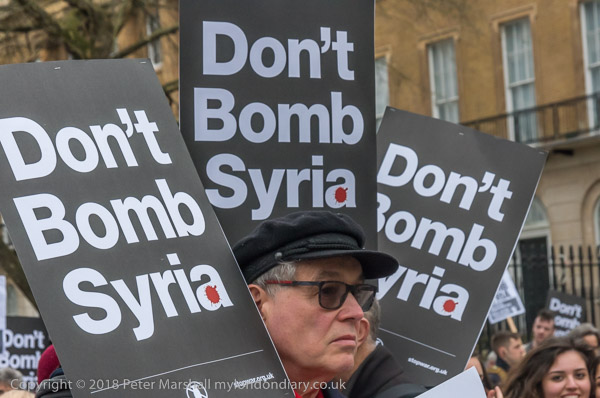
It was also conveniently on my way across the bridge for the short walk to Downing St, where Stop the War had called a protest calling for Theresa May to stop her plans to take part in bombing Syria, together with French and US forces, following a possibly unreliable report of a chemical attack by Assad’s forces.
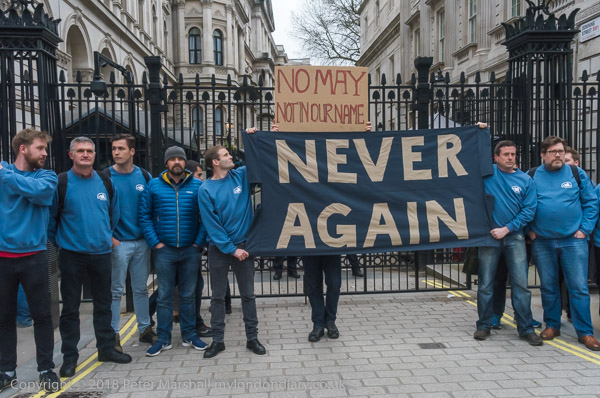
They were not the only groups there to protest, with a number of Syrian Assad Supporters, Veterans for Peace, and others who continued the protest after Stop The War, having had a few speeches from their members and taken a letter to Downing St (fortunately they went with an MP who was allowed in to deliver it, though they were not) in their highly controlled protest packed up and left. Things then got a little more interesting with people going on to Whitehall and blocking traffic, eventually being removed by police.
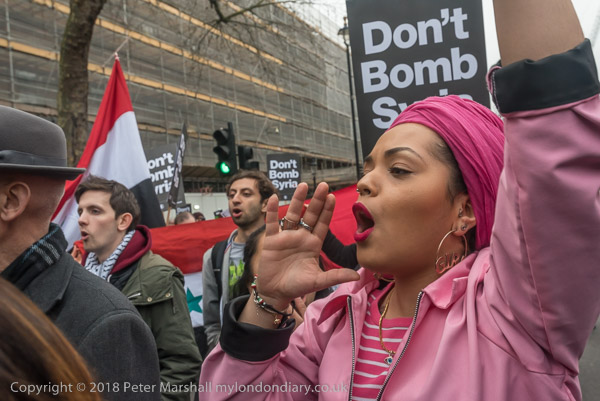
Though better to photograph, this also threatened my schedule, as I was hoping to cover a small protest at the Ministry of Health by NHS staff from hospitals across London opposed to the proposed pay deal for all NHS staff other than doctors, dentists and very senior managers.
It would have been easy if the Dept of Health was still in Whitehall, in Richmond House where it had been since this was built in 1987, just a few yards from Downing St. But unfortunately it recently moved out to new offices in Victoria St around half a mile away, rather a long way to run carrying cameras and bag. I saw the protesters outside in the distance as I trotted down the street, but then looked again when closer and they had disappeared, having occupied the foyer.
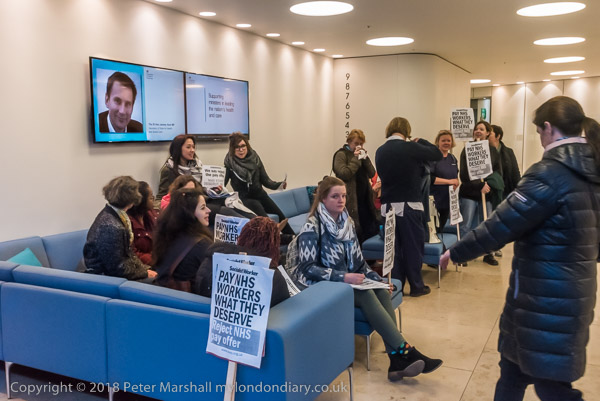
Fortunately security had not locked the door, and I was able to follow them in to take a few pictures, but was rather out of breath and perhaps not at my best. After a few minutes they went outside and posed for some group photographs.
More on all three protests:
Palestinian Prisoners Day protest
Don’t Bomb Syria protests
Ditch the Deal say NHS Staff
______________________________________________________
There are no adverts on this site and it receives no sponsorship, and I like to keep it that way. But it does take a considerable amount of my time and thought, and if you enjoy reading it, a small donation – perhaps the cost of a beer – would be appreciated.
My London Diary : London Photos : Hull : River Lea/Lee Valley : London’s Industrial Heritage
All photographs on this and my other sites, unless otherwise stated, are taken by and copyright of Peter Marshall, and are available for reproduction or can be bought as prints.
To order prints or reproduce images
________________________________________________________
